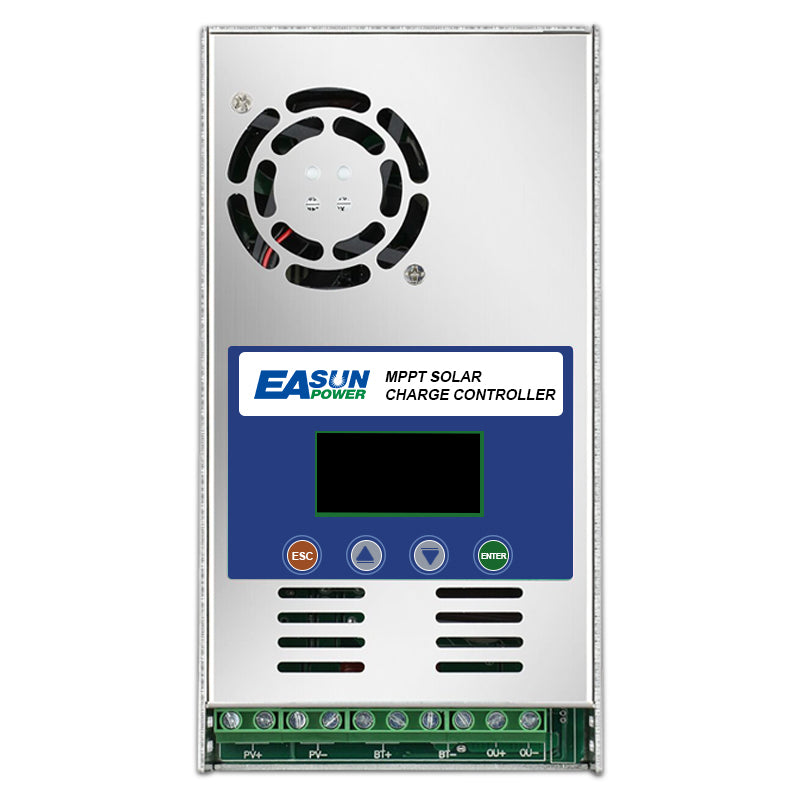Inverters play a crucial role in our daily lives by converting DC (direct current) power into AC (alternating current) power. However, it's not uncommon for inverters to experience overloads, leading to various issues.
In this blog post, we will explore what happens when an inverter is overloaded, how to reset it, what causes overloads, potential damage, and address some frequently asked questions related to inverter overloads.
What Happens If an Inverter Is Overloaded?
When an inverter is overloaded, several consequences may occur:
Inverter shows a red light
The red light on the inverter typically indicates an error or fault condition, which could be triggered by the overload. The specific meaning of the red light can vary depending on the manufacturer and model of the inverter.
Note: The specific meaning of the red light can vary depending on the manufacturer and model of the inverter. Generally, reasons when the inverter shows a red light include:
- When it is detected that the input voltage is too low, the inverter will automatically switch to the under-voltage protection state.
- When the input voltage is detected to be too high, the inverter will automatically switch to the overvoltage protection state.
- The inverter may switch to overcurrent protection state.
- The inverter is overloaded, causing the fuse to blow.
Inverter shutdown or tripping
Overloading can trigger built-in safety mechanisms, causing the inverter to shut down or trip. This safeguards the inverter from further damage and protects connected devices.
Reduced efficiency and performance
Overloading the inverter regularly can negatively impact its efficiency and overall performance. It may lead to voltage fluctuations, increased power consumption, and shorter lifespan.
Potential damage to electrical devices
Overloading an inverter can strain connected electrical devices, potentially causing them to malfunction or even suffer permanent damage.
How to reset inverter overload?
Resetting an inverter overload typically involves the following steps:
Disconnect the load
Turn off or disconnect the devices that are connected to the inverter. This will help reduce the load and prevent further damage.
Allow time for cooling
Inverters can become overheated during an overload. Give it some time to cool down before attempting to reset it. The duration will depend on the specific inverter model, but generally, waiting for 10 to 15 minutes should be sufficient.
Locate the reset button or switch
Many inverters have a reset button or switch that allows you to reset them after an overload. Refer to the user manual or manufacturer's documentation to find the specific location of the reset mechanism on your inverter. It could be a button, a switch, or a combination of buttons to press.
Reset the inverter
Once you have located the reset button or switch, press or toggle it according to the manufacturer's instructions. This action will reset the inverter and clear the overload condition.
Reconnect the load
After resetting the inverter, you can reconnect or turn on the devices that were previously connected. Ensure that the combined power consumption of the devices does not exceed the inverter's rated capacity to avoid triggering another overload.
What Can Cause an Inverter to Overload?
Several factors can contribute to an inverter becoming overloaded:
-
High-power demand
-
Power surge or short circuit
-
Inadequate wiring or faulty connections
-
Inadequate wiring or faulty connections
-
Inverter undersizing
Will Overloading Damage the Inverter?
While an occasional overload may not immediately harm your inverter, sustained overloading can have detrimental effects in the long term. Excessive heat generation, component stress, and reduced lifespan are some of the risks associated with continuous overloading.
That's why it's crucial to invest in an inverter that offers reliable overload protection. Look no further than Easunpower solar inverters! With Easunpower, you can enjoy the peace of mind that comes with knowing your system is well-protected.
Easun Power solar inverters go above and beyond by providing comprehensive system protection features. In addition to overload protection, they also offer safeguards such as overvoltage protection, undervoltage protection, as well as protection against over-temperature, short circuits, and reverse polarity.
Don't compromise the longevity and efficiency of your solar system. Choose Easunpower solar inverters for unparalleled performance and robust protection. Invest in the reliability and durability that your solar power system deserves.
FAQs on Inverter Overloads
Why Does My Inverter Show Overload Without Load?
If your inverter displays an overload indication even without any load connected, it could be due to:
-
Internal fault
- Wiring or grounding problem
Does the inverter have a reset button?
How do I reset the inverter? Normally, you follow the manual, press and hold the ON/OFF button of the inverter for 15 seconds, and wait for the charging LED to flash rapidly, and this will reset the inverter.
How do I know the inverter is not working?
When the inverter has a continuous sounding alarm, it is possible that the inverter is not working. The reasons for the continuous beeping alarm are overload or a stuck cooling fan. If there is an overload, remove the excess load.
Pls Noted
Inverter overloads can be frustrating and potentially damaging. By understanding the causes, consequences, and steps to reset an overloaded inverter, you can effectively troubleshoot and resolve these issues. Remember to prioritize safety, follow the manufacturer's guidelines, and consult a professional if you encounter persistent problems with your inverter.


